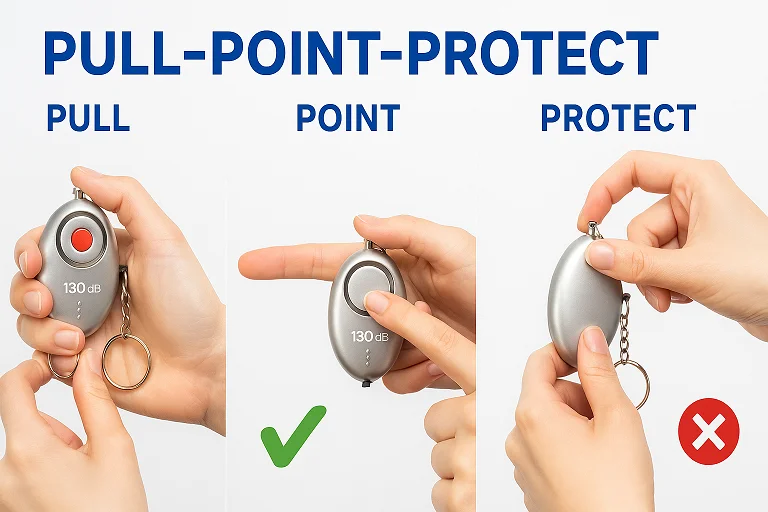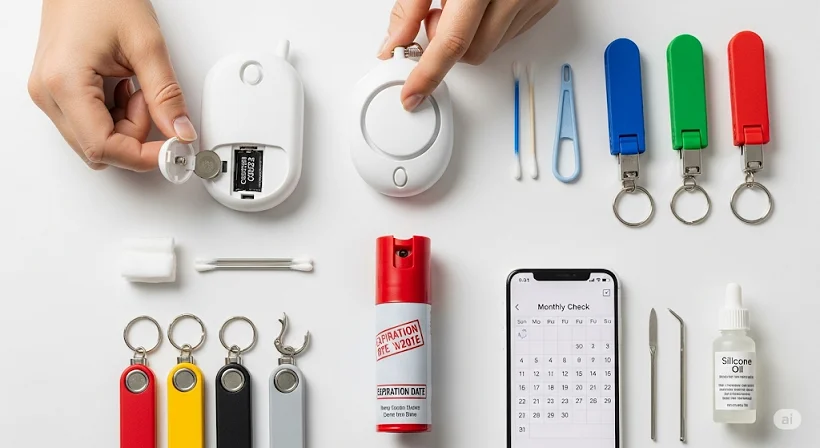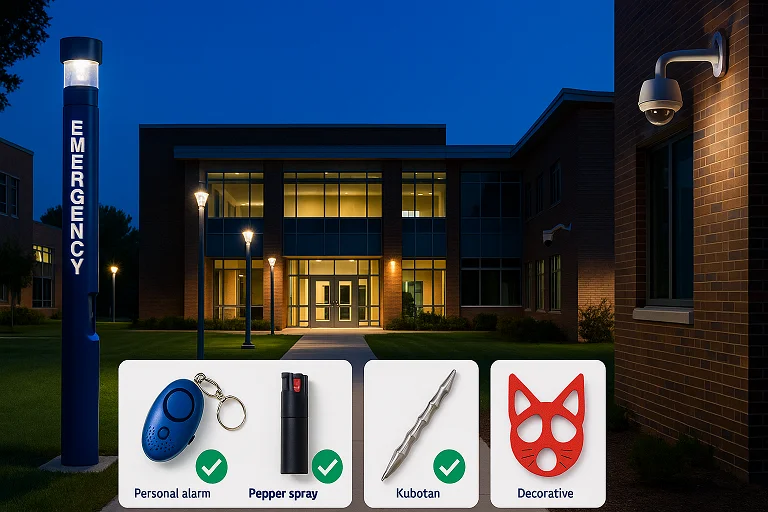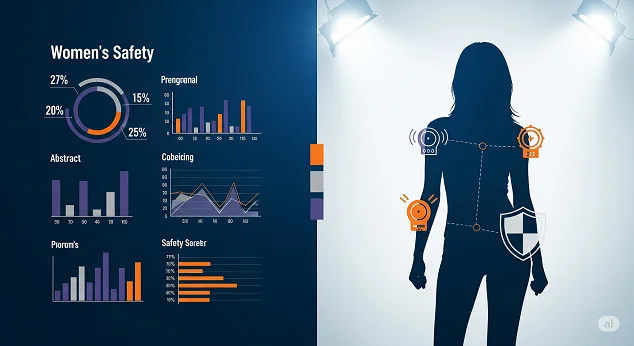Pull, Point, Protect: Mastering Your Personal Safety Alarm
Step-by-step demo of activating, silencing and maintaining a 130 dB personal alarm keychain. Master the Pull-Point-Protect method for maximum safety.

Pull, Point, Protect: Mastering Your Personal Safety Alarm
You've made a smart choice investing in a personal safety alarm keychain. With its ear-piercing 130 dB siren, this compact device can be the difference between danger and safety. But like any tool, it's only effective if you know how to use it properly and instinctively.
When adrenaline is pumping and you're facing a potential threat, you don't have time to figure out instructions. You need muscle memory and confidence. This comprehensive guide will teach you the Pull-Point-Protect method to master your personal alarm keychain.
Understanding Your 130 dB Personal Alarm
Before diving into usage, let's understand what makes your personal alarm so powerful. At 130 decibels, your alarm produces sound comparable to:
- A jet engine at 100 feet away
- Standing next to a chainsaw
- A rock concert speaker at close range
- An ambulance siren
Why 130 dB Works:
- Immediate Disorientation: The sudden, piercing sound is physically painful and startling at close range
- Attention Grabber: Can be heard from 300-400 meters away, alerting bystanders and potential help
- Psychological Impact: Creates panic and confusion in attackers, disrupting their plans
Types of Personal Alarm Activation
Personal alarms typically use two activation methods:
Pull-Pin Models (Most Common)
- Activation: Pull the metal pin or attached keychain to activate
- Brands: SABRE, Mace, WETEN
- Advantage: Simple, reliable mechanism that works even with gloves
Button-Activated Models
- Activation: Press or double-tap the SOS button
- Brands: Rechargeable USB models
- Advantage: No small parts to lose, often rechargeable
The Pull-Point-Protect Method: Step-by-Step Guide
Step 1: PULL - Proper Activation Technique
For Pull-Pin Models:
- Secure Grip: Hold the main alarm body firmly in your dominant hand
- Position: Keep your thumb and fingers around the body, not covering the speaker
- Pull Action: Use your other hand to grab the metal pin or keychain loop
- Execute: Pull straight out with a sharp, decisive motion - no twisting or wiggling needed
For Button Models:
- Locate Button: Find the SOS or alarm button (usually on front or top)
- Press Firmly: Double-tap quickly or press and hold (depends on model)
- Confirm: Look for LED activation light and listen for siren
Practice Tip: Familiarize yourself with your specific model. Practice the activation motion while holding the alarm behind your back or in a pocket to simulate real-world conditions.
Step 2: POINT - Maximize Effectiveness
Once activated, strategic positioning amplifies your alarm's impact:
Optimal Positioning:
- Direct the Speaker: Aim the alarm's speaker directly at the threat's head/ears
- Create Distance: If possible, toss or drop the activated alarm between you and the attacker
- Strategic Placement: The attacker's instinct will be to stop the noise, buying you escape time
LED Light Usage (if equipped):
- Many models include bright LED strobes or flashlights
- Point lights directly at attacker's eyes to cause temporary disorientation
- Use in dark environments to increase visibility and signal for help
Additional Tactics:
- Shout for Help: Your voice combined with the alarm creates maximum attention
- Move Toward People: Head toward populated areas, lit buildings, or emergency phones
- Stay Mobile: Keep moving while the alarm sounds - don't freeze in place
Step 3: PROTECT - Proper Deactivation and Reset
Silencing Your Alarm:
Pull-Pin Models:
- Retrieve the Unit: Collect the alarm body if you dropped it
- Re-insert Pin: Push the metal pin firmly back into its original position
- Secure Connection: Ensure the pin is fully seated to stop the siren
Button Models:
- Long Press: Hold the SOS button for 3-5 seconds
- Power Button: Some models have separate power/stop buttons
- Check Manual: Review your specific model's deactivation method
Reset and Secure:
- Reattach the alarm to your keychain or gear
- Check that it's easily accessible for next time
- Test the activation briefly to ensure it's working properly
Maintenance and Battery Care
Monthly Testing Protocol
Safety Testing (Outdoors Only):
- Location: Step outside, away from others
- Quick Test: Activate for 2-3 seconds maximum
- Volume Check: Confirm full 130 dB output
- LED Test: Verify any lights function properly
- Deactivation: Practice the silencing procedure
Battery Maintenance by Model Type
| Model Type | Battery | Runtime | Replacement | Signs of Low Battery |
|---|---|---|---|---|
| SABRE Pull-Pin | 2x CR2032 | 40+ minutes | Annual or after use | Dim LED, weak sound |
| Mace Key Alarm | 3x LR44 | 30+ minutes | 8-12 months | No LED response |
| USB Rechargeable | Internal Li-ion | 90 minutes | Charge monthly | Red charging light |
| WETEN 130dB | USB-C | 1 year standby | 1-hour charge | Battery indicator |
Maintenance Tips:
- Spare Batteries: Carry backup batteries in your bag
- Post-Use Care: Replace/recharge immediately after any real activation
- Keep Clean: Wipe vents clear of lint - blocked speakers lose 10+ dB of volume
- Temperature: Store below 120°F (hot cars can damage speaker membranes)
Advanced Usage Strategies
Situational Awareness Integration
Your personal alarm works best as part of a comprehensive safety strategy:
Preventive Measures:
- Visible Deterrent: Let potential threats see your alarm - visibility can prevent incidents
- Accessible Positioning: Clip to outside straps, belt loops, or wristbands for instant access
- Backup Planning: Know where help is located (security offices, emergency phones, populated areas)
Combination Tactics:
- Multiple Tools: Pair with pepper spray, personal safety apps, or kubotans for layered protection
- Group Safety: Coordinate with friends - everyone should know your alarm sound
- Environmental Awareness: Choose well-lit paths where the alarm's sound will be most effective
Legal and Social Considerations
Legal Status:
- Personal alarms are legal in all 50 US states
- TSA-approved for air travel (unlike pepper spray)
- School and workplace policies may vary - check local regulations
Ethical Usage:
- Emergency Only: Reserve for genuine threats, not pranks or false alarms
- Considerate Testing: Practice outdoors, away from others
- Quick Deactivation: Stop the alarm promptly when safe to avoid disturbing others
Troubleshooting Common Issues
Alarm Won't Activate
- Check Battery: Replace or recharge if indicator shows low power
- Pin Position: Ensure pin is properly inserted when not in use
- Speaker Blockage: Clear any debris from sound vents
Weak Sound Output
- Battery Level: Low power significantly reduces volume
- Speaker Damage: Check for cracks or water damage
- Age Factor: Replace alarms older than 2-3 years for optimal performance
False Activations
- Secure Storage: Ensure pin can't be accidentally pulled in bags or pockets
- Button Models: Check if button is protected against accidental pressing
When to Replace Your Personal Alarm
Replace Every 2-3 Years:
- Sound output diminishes over time
- Battery compartments may corrode
- Speaker membranes can weaken
Immediate Replacement Needed:
- Cracks in the speaker housing
- Water damage or corrosion
- Inconsistent activation
- Volume noticeably reduced
Building Confidence Through Practice
Monthly Drill Routine (60 seconds):
- Positioning: Practice accessing your alarm from different carrying positions
- Activation: Execute the pull or press motion smoothly
- Directional Control: Practice pointing away from your ears
- Deactivation: Master the silencing procedure
- Reset: Ensure everything is properly secured
Scenario Training:
- Practice in low-light conditions
- Try activation while walking or moving
- Test with winter gloves on
- Practice one-handed operation
The key to effective personal alarm usage is building muscle memory through regular practice. When you need it most, you won't have time to think - only react.
Product Recommendations and Upgrades
Looking to upgrade your personal safety setup? Consider these highly-rated options:
For Students: Cute Bow 12 PCS Self Defense Keychain Kit offers comprehensive protection in one convenient, stylish package perfect for campus life.
For Professionals: Classic Black Self Defense Keychain Set blends seamlessly with professional attire while providing full 130 dB protection and discrete design.
For Outdoor Enthusiasts: Army Green Self Defense Keychain Set features durable construction and tactical color perfect for outdoor adventures.
For complete peace of mind, browse our full collection of personal safety alarm keychains featuring the latest 130 dB technology.
Expert Safety Resources
For additional safety strategies, check out our comprehensive guides:
- College Safety Tips for Women Walking at Night - Essential campus safety protocols
- Complete Guide to Self-Defense Laws by State - Legal considerations for personal protection tools
- Ultimate Women's Safety Keychain Guide - Comprehensive self-defense tool comparison
Conclusion: Your Sound of Safety
Your 130 dB personal alarm keychain represents more than just a safety device - it's your portable peace of mind. By mastering the Pull-Point-Protect method, maintaining your equipment properly, and practicing regularly, you're ensuring this powerful tool will be ready when you need it most.
Remember: the best personal alarm is the one you carry consistently and know how to use instinctively. Whether you're walking to your car at night, traveling in unfamiliar areas, or simply want that extra layer of protection, your personal alarm gives you the power to turn a dangerous situation into a public emergency that demands attention.
Stay safe, stay prepared, and let your alarm be the sound that protects you.
Ready to upgrade your safety? Browse our collection of professional-grade 130 dB personal alarms, featuring the latest activation technology and maximum portability. Shop Safety Alarms Now
Related Articles

5-Minute Monthly Check-up for Your Safety Keychain
Simple maintenance—battery test, pepper-spray expiry & strap wear—to keep your kit mission-ready. Expert maintenance guide for maximum reliability.

10 Real-World Safety Tips for College Women Walking at Night
Stay confident on campus: practical habits and the must-have keychain tools that protect you after dark. Expert college safety tips for women students.

Why Women Prioritize Personal Safety—Key U.S. Crime Stats
Data-backed look at victimization rates & why smart gadgets matter more than ever. Complete 2025 analysis of female crime statistics and safety tech trends.